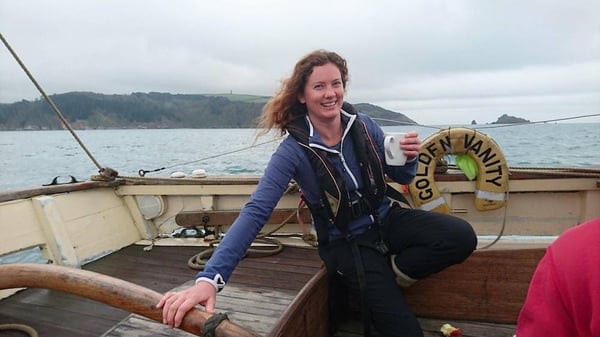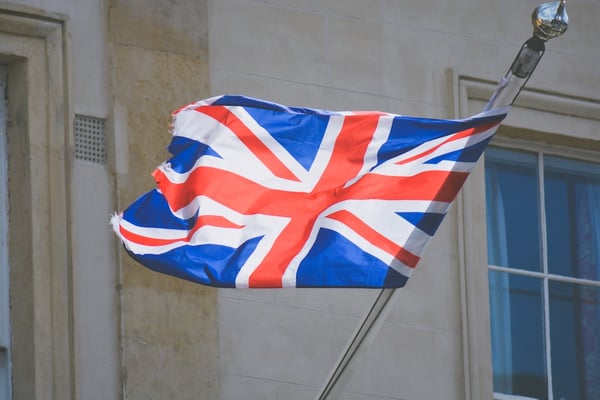What does it take to provide the best customer service in the UK? 10 UK-based SMBs offer their thoughts.
Heraclitus said, “Everything changes, and nothing stands still.” And David Bowie said, "Ch-Ch-Ch-CHANGES!"
When it comes to customer service, for many small businesses it can feel like the only constant is change: changing consumer preferences, changing platforms, changing rules, changing standards, changing baseline measurements, changing political landscapes - the list goes on.
One constant is the fact that small businesses are all trying to provide the best customer service possible. Rest assured that, in trying to do so, a challenge for one business is likely shared by hundreds, even thousands, of businesses around the globe.
Often times sharing these challenges can help us identify trends, make changes to respond to market conditions, and hit our business goals. Earlier this year, our friends Bynder Digital Asset Management did just that, offering their own insights on UK Customer Service trends.
Yet as I reflected on that article, I realized we didn't include any input from business owners in the United Kingdom. To remedy that, I emailed a number of UK businesses to collect the trends they're seeing in their own customer interactions.
 The team at Chillisauce, one of the companies that provided comment for this article.
The team at Chillisauce, one of the companies that provided comment for this article.
This is the first part of my roundup from these conversations. I hope you find it helpful, or at the very least consoling that there are businesses who are grappling with the same challenges you are, wherever you may be.
A growing preference for live chat
“Over the past five years we have noticed a strong trend of customers being less willing to communicate over the phone, and email and an expectation of being able to do pretty much everything online instantly,” said James Baddiley of Chillisauce. “Customers are also expecting to be able to communicate with us in a multitude of different ways.”
This growing preference for immediacy online continues to buoy live chat app usage. With live chat, many small businesses in the U.K. are able to talk to more customers, either in real time, or asynchronously after a lead has come in.
Some of that is a cultural shift. As Dan Bryan of Languages United tells me, many of his potential customers, students, are from a generation that expects to find information and communicate online.
"Our international students come from all over the world to learn English at our school in Bath, UK. Live chat on Olark helps us answer questions from students immediately, which improves the prospect of them booking a course with us."
Matthew Adams of Webfactory says that online customer interactions has increased their capacity to serve more customers. “It's only possible for an agent to take part in one meeting or take one call at a time, whereas live chat enables an agent to help several customers at a time,” he says.
In a similar vein, Jamie Stanford of Liberty Games notes that chat has improved communication with non-native speakers, as opposed to traditional, phone-based support and service.
“We are finding chat useful in fielding customer enquiries from abroad, or from people for whom English isn’t a first language,” he says. “Using chat, they are able to communicate more easily without the pressure of a telephone call, using translations where necessary.”
For Mia Galea of Vida Consultancy, chat is a way to capture leads even if her agency can't be online 24/7.
“We are too small a team to monitor live chat every hour of every day," she says. "Yet a lot of our potential clients are busy people and don’t necessarily want to take the time to look through our whole website and fill in an enquiry form. The nice thing about chat is, when we're not online, someone browsing our site can still click the chat button and send an email via our offline form. We receive these messages almost daily, and our Membership Team can deal with them immediately."
Languages United has also found this to be true. "Students might be from different time zones, so the ability for them to leave a message when we are offline means they can communicate without having to leave our website."
Walking a fine line
While the proliferation of online communication tools has created more options for companies and customers alike, these innovations have opened something of a Pandora’s box. After all, with increased flexibility come increased expectations.
As Lee Chapman of CakeHR notes, "As head of customer success, I take this to heart. HR managers across the world are scrambling for a SaaS (software as a service) tool. We used to think in terms of 'what does a customer want?' when we started to onboard them. We created task lists for them to set up their account and send automated emails every so many days. What we didn't realise is 'why a customer wants it.' Without knowing the 'why', it was impossible to get them to the AHA! moment. Asking 'why' along their path led us to roadblocks towards their activation. We soon realised that the biggest issue that a potential customer had was they had decades worth of spreadsheets and only a manual method of importing that information."
Jon Graves of Northern Telecom notes sees that as another opportunity to delight customers.
“As technology changes, end-users want instant gratification and a rapid response on the choice of communication they choose,” he says. “This is no bad thing—customer service is the pretense for retention of customers and if you don’t give them the flexibility of choice, coupled with focused and active response times, they will go somewhere else.”
Adrian Sevitz of of vzaar echoes that sentiment, and says his company is firmly committed to offering what customers prefer, even if it carries an expectation of immediacy.
“Customer expectations are different today to a decade ago. Customers now expect you to be highly responsive to their needs and that means being able to respond with immediacy when they need it. Not being able to support customers via the mechanisms that suit them (e.g. Twitter or live chat) means you’re not able to support your customers effectively. If we didn’t offer live chat, for many customers we would effectively be ignoring them. That is not something I plan to do."
 Becky Prizeman of Classic Sailing. The company uses Olark on its website to offer live chat customer service.
Becky Prizeman of Classic Sailing. The company uses Olark on its website to offer live chat customer service.
Using digital tools to make business more human
While the Internet’s effects on interpersonal relationships are constantly being debated, technology has undisputedly increased the ability for companies to meet each of their customers’ specific demands.
Hyun Lee of Qminder tells me “personalisation” is a key trend in the UK customer service industry, and it runs through every facet of the customer journey — from advertising to support, to purchase interactions.
“Personalization caters to a customer’s unique needs, as opposed to a one-size-fits-all approach of the past,” says Hyun. “However, the complexity of providing personalised support causes many brands to struggle to deliver it in an effective manner. Digital technologies such as live chat, CRMs, and marketing automation platforms offer a helping hand. The platforms make data more accessible, enabling businesses to track customer preferences, identify trends, predict shopping behaviors, and personalize an experience accordingly.”
Hyun says the result of this personalization is brands successfully building stronger, more meaningful bonds with each customer. This relationship allows upselling as well as the lasting loyalty that will keep customers coming back.
PlumbNation has seen this firsthand with live chat. After reviewing thousands of their online chat transcripts, James King says his team realized the majority of questions they are being asked are at the very end of the buying journey.
"At this point — near completion of the buying journey — our customers typically need a final reassurance that the product they want is suitable for their application," says James. "So we adjusted our process to make a point of asking customers if they have any final questions before ending each chat session, and allow every customer to end the conversation on their terms."
James says this subtle change has resulted in a significant reduction in returns through better serving and answering of these final questions.
 Photo by Chris Lawton on Unsplash
Photo by Chris Lawton on Unsplash
The looming influence of Brexit
While it may take decades to fully determine the effects of Brexit, its immediate impact finds the UK’s economy in a state of limbo amidst uncertainty and anxiety over the country’s future. As a result, the UK market has seen a growing emphasis on customer service—and a shrinking margin for error.
“In the UK today we have to get all our marketing ducks in a row,” said Becky Prizeman of Classic Sailing. “Failure in any area will leave us struggling to cope with any negative effects of Brexit. As a small business, even though resources are tight, we've seen our customers feel a better connection with us through Olark live chat on our website, both live and offline. That commitment to improved customer relations will help Classic Sailing enter the top 10% of UK companies next year."
|
Want to add Olark live chat to your website? You can start a two week free trial right now: |


